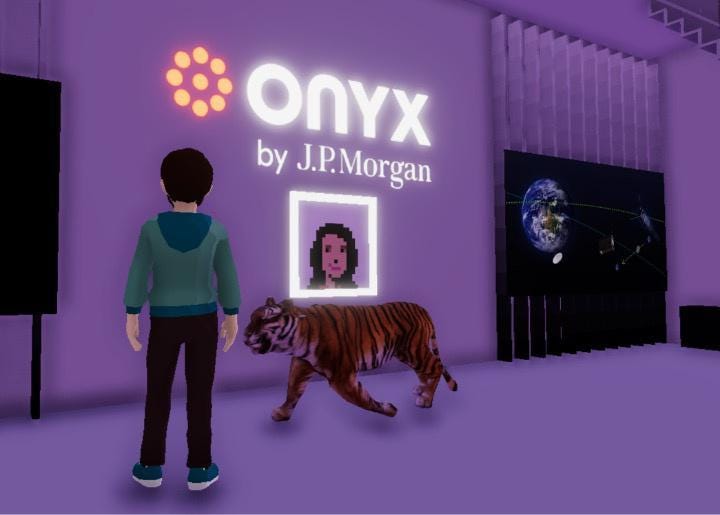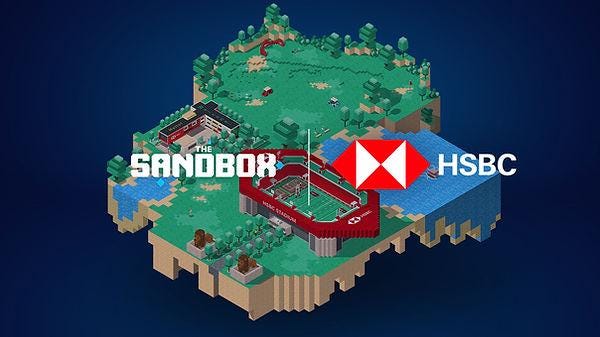
Issue #25: Use Cases of Metaverse: Banking & Finance
The metaverse is a dynamic space that is still to define itself. However that hasn’t stopped it from disrupting industries. From the fashion sector to the automobile one, the metaverse poses a potent new opportunity. It does this by offering greater connection, accessibility, and convenience. All this when it’s still at a nascent stage. Something like the internet was in the 70s.
This article is part of of the series of articles focused towards use cases of metaverse.
- Why Metaverse Matters To Businesses?
- Use Cases of Metaverse : Gaming
- Use Cases of Metaverse: Entertainment & Social Media
- Use Cases of Metaverse: Fitness
- Use Cases of Metaverse: Education
- Use Cases of Metaverse : Corporates
- Use Cases of Metaverse: Automotive
- Use Cases of Metaverse: Design, Architecture & Engineering
- Use Cases of Metaverse: Real Estate & Construction
- Use Cases of Metaverse: Travel, Hospitality & Tourism
- Use Cases of Metaverse: Banking & Finance (this article)
- Use Cases of Metaverse: Fashion & Apparel
- Use Cases of Metaverse: Medical & Health
Gartner projects that 25% of people will spend at least an hour daily in the metaverse by 2026. This impressive estimate comes with a background of companies shifting their operations onto the platform by leveraging AR and VR technology.
The banking and finance industry is not far behind. Reputed financial institutions across the globe are exploring what the metaverse can mean for their operations. Some have even planted their flag as early birds. This article discusses how the financial sector is evolving and the institutions at the helm.
What Does the Metaverse Offer the Banking Sector?
The metaverse offers financial institutions a unique opportunity to scale up. Here is what it brings to the table.
- Redefine Customer and Employee Experience
Metaverse leverages AR and VR technologies to deliver immersive experiences to users. Banks entering the space can improve their customer experience with these technologies. Customers can perform banking functions such as paying bills, withdrawing funds, and making transfers through their online avatar. They can walk into the virtual bank and interact with other customers and employees like they would in the real world.
Further, banks can use this for employee training as well. They can host professional development training virtually, where employees can interact with each other in real-time. This helps foster a sense of community and belongingness in the institution.
2. Improve Customer Interaction
The metaverse allows banks to offer superior customer experience by improving their online presence. While online banking is convenient, it suffers from the lack of human interaction. Metaverse solves this problem.
Customers can now interact with bank employees in real-time through avatars. They can have virtual portfolio discussions or financial planning sessions without taking out their car. The metaverse eliminates the emotional detachment that plagues online banking.
3. Broaden the Scope of Operations
The metaverse symbolizes a whole new economy. One that is powered by cryptocurrency. Digital assets such as NFTs (non-fungible tokens) and virtual real estate are steadily growing in demand. By establishing a presence in Metaverse, banks can also consider extending their operations to virtual currencies. This will give them greater access to the increasingly technologically savvy customer base.
Banks Embracing the Metaverse
- Kookmin Bank
The South Korean bank partnered with Sharebox to launch the KB Metaverse VR Branch Testbed in 2021. Their customers can now access banking services in the metaverse through Sharebox’s VR headset.

Kookmin Bank’s metaverse branch includes a VIP lounge and a central hall. On entering the virtual branch, customers get an avatar. Through these virtual personalities, customers navigate the branch like they would in reality.
They can conduct simple transactions such as withdrawing and depositing funds through the virtual teller window. For other services, they can access the VIP lounge. Here, they find an employee who can help them with investment portfolios and analyze risk-return profiles. Further, Kookmin Bank also plans to use the platform to train new employees.
2. Quontic
This American financial institution announced the launch of its outpost in Decentraland last year. Known for its digital-first mindset, Quontic was the first bank to offer bitcoin rewards to its account holders.
So, establishing a branch in the metaverse seems only natural for this financial institution. Quontic aims to bridge the gap between online and offline banking operations by offering a more personal experience.
‘Banking once required consumers to visit a location and rely on printed documents to manage their money with personal support from a teller, today we carry all of that power in our pockets on an app, but the experience is cold. In the not-so-distant future, our customers will have the best of both worlds, and this outpost is the first step towards that level of service.’ – Steve Schnall, CEO of Quontic Bank
The convenience of online and the human connection of offline banking can now be found in the metaverse.
-
JP Morgan
The American banking giant unveiled the Onyx Lounge last year. The launch is credited to the increased customer interest in their Ethereum-based services. The bank hopes to offer the same banking services virtually as it does in its physical branches.
This is especially important as JP Morgan is the largest American bank by assets held. Its decision to enter the metaverse financial space signifies the metaverse’s potential.
-
HSBC
The British bank plans to buy a plot of land at The Sandbox metaverse. HSBC hopes to use the space to connect with e-sports, sports, and gaming enthusiasts.
‘At HSBC, we see great potential to create new experiences through emerging platforms, opening up a world of opportunity for our current and future customers and for the communities we serve. Through our partnership with The Sandbox, we are making our foray into the metaverse, allowing us to create innovative brand experiences for new and existing customers.’ – Suresh Balaji, CMO, Asia Pacific, HSBC
Gucci, Adidas, and Warner Music Group (WMG) are some brands that have partnered with The Sandbox to offer their customers immersive experiences.
Why Are Some Financial Institutions Hesitant?
While there are financial institutions that have made significant headway in the metaverse, there still remain many who sit on the fence. This is because of two reasons.
-
Lack of Regulations
The metaverse lacks legal regulations to oversee operations. This is especially concerning for banks, given the sensitive nature of customer data. Without concrete policies and redressal processes in place, safeguarding financial information can be challenging.
-
Complexity
Metaverse is a complex concept. One that is highly dependent on other technologies such as AR and VR. For this, banks need to partner with experts to understand the capabilities of the space and how they can leverage it. This can be a substantial investment for banks.
Wrapping Up
The Metaverse financial market size is estimated to grow at a CAGR of 21.33% and increase by an impressive US $ 107.06 billion by 2027.

The banking sector might face significant obstacles in establishing a presence in the metaverse. However the benefits of the space cannot be ignored. Institutions such as HSBC and JP Morgan have already begun leveraging new technology to deliver improved customer experience and diversify their operations. Banks looking to stay relevant in the digital era must do the same.












Leave a Reply